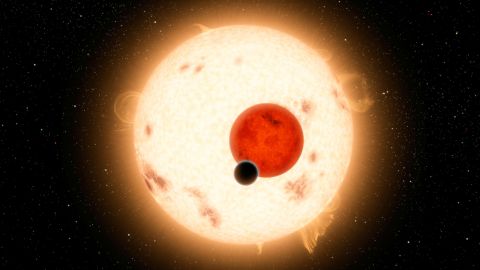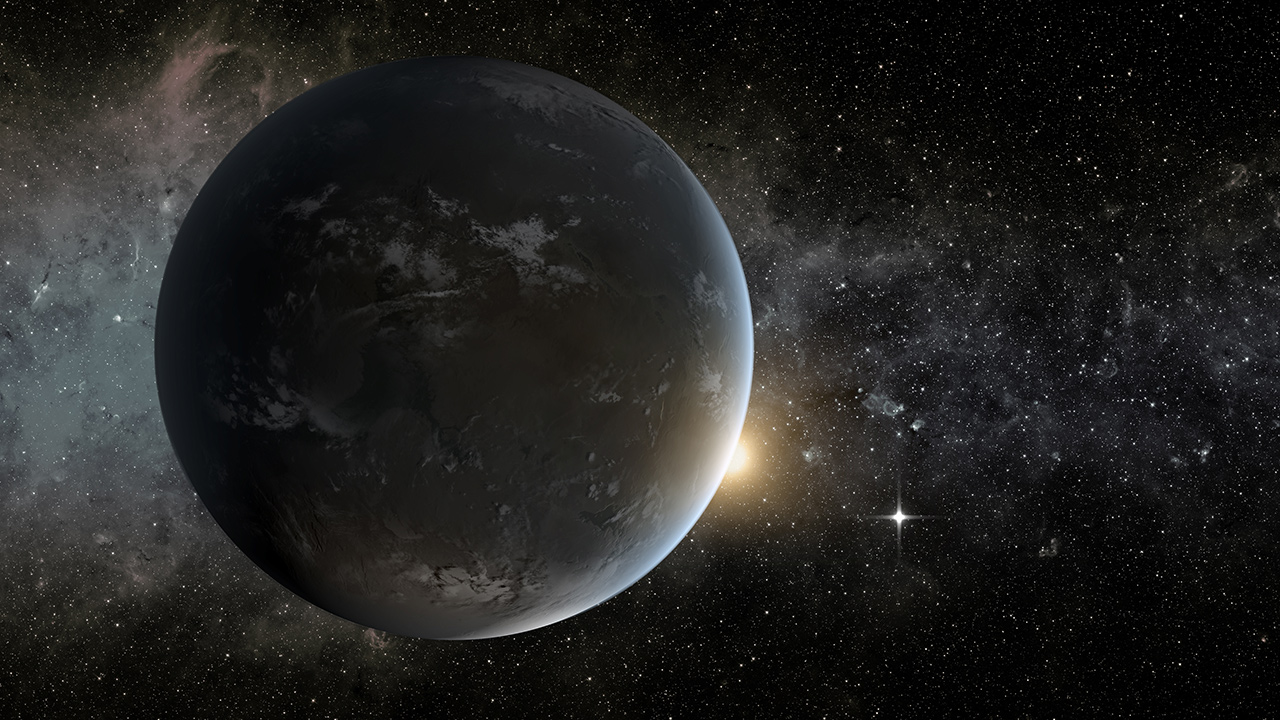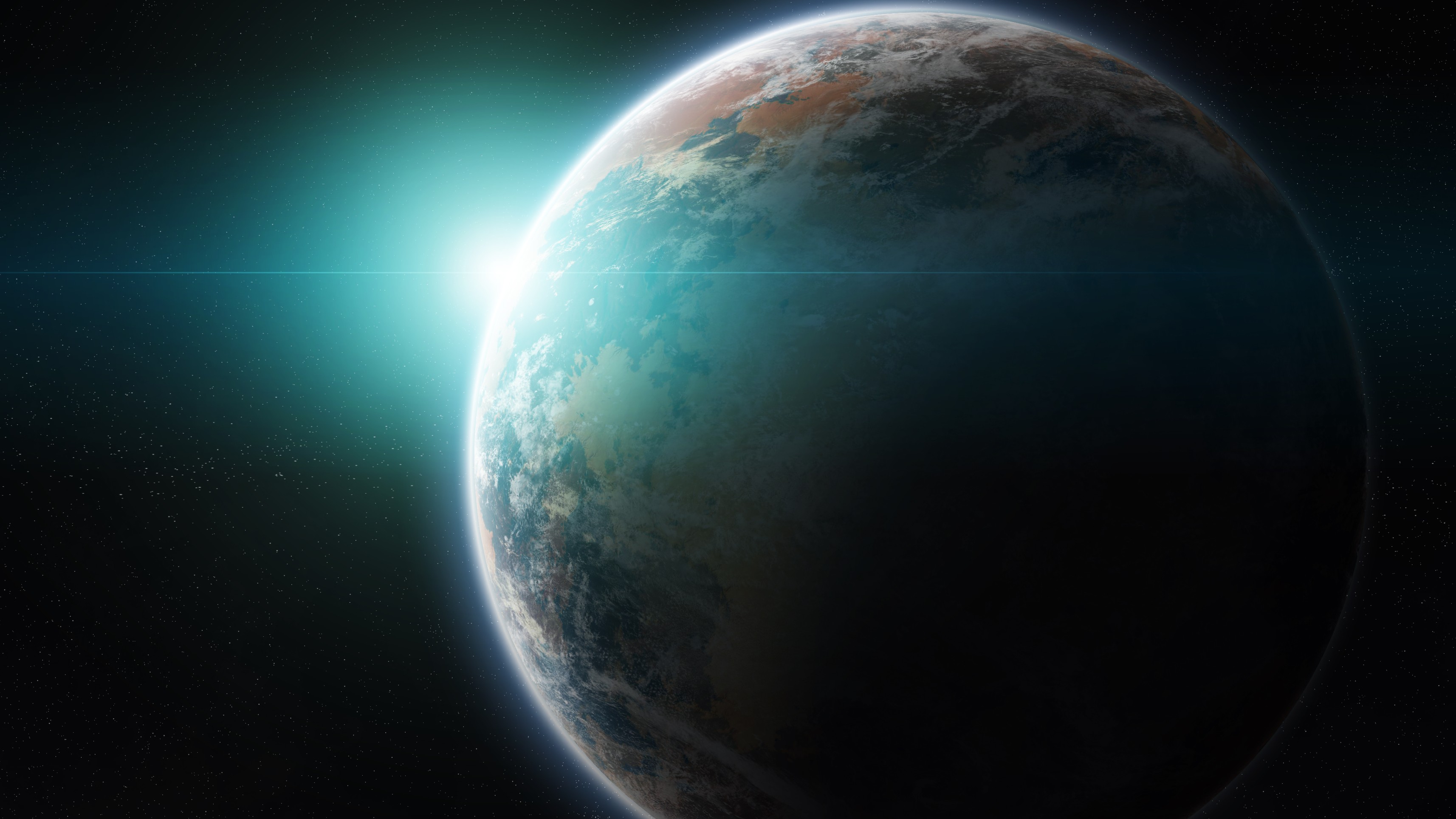Dwarf planetary systems will transform the hunt for alien life

Written speculation about life beyond the confines of Earth dates back thousands of years, to the time of the Greek philosophers Epicurus and Democritus. Unrecorded curiosity about this question undoubtedly goes back much further still. Remarkably, today’s generation seems about to get an answer from the study of exoplanets – planets orbiting other stars than the Sun. The early results are upending many assumptions from that long history.
Two months ago, our research team at the University of Cambridge and the University of Liège in Belgium reported that a nearby star, called TRAPPIST-1A, is orbited by seven planets similar in size and mass to Earth. All seven planets are temperate, meaning that under the right atmospheric and geologic conditions, they could sustain liquid water. Three of the planets show particular potential for habitability, receiving about as much energy from their star as the Earth receives from the Sun.
Our discovery received ecstatic and gratifying news coverage around the world. In many ways, though, the TRAPPIST-1 system is an odd place to look for life. The central star is just 1/12th the mass of the Sun and scarcely bigger than the planet Jupiter. It gives off just 0.05 per cent as much light as the Sun. TRAPPIST-1A belongs to a class that we call ultra-cool dwarfs, the very smallest stars that exist.
Searching for habitable planets around ultra-cool dwarfs has long been considered a waste of time. Even as astronomers found that exoplanetary systems are generally different from the solar system, old attitudes lingered. The Earth and Sun appear so normal and hospitable to our eyes that we get blinded by their attributes. Major programmes are therefore directed at finding an Earth twin: a planet the mass and size of our own, orbiting a star just like the Sun, at the same Earth-Sun distance. The detection of such a world remains decades away.

In the effort to answer the question ‘Is there life elsewhere?’ the focus on Earth twins is perceived as a safe path, since we can expect that similar conditions will lead to similar results (at least part of the time). However, we argue that this is far too conservative a goal, considering the huge number and diversity of available planets. That is part of the message of TRAPPIST-1. Research should be about finding what we don’t already know. Identifying a life-bearing Earth twin would be a resounding scientific success, but it would teach little about the overall emergence of biology in the Universe.
Our ambition is wider. Instead, we seek an answer to ‘How frequently is life found elsewhere?’ This simple change of words means that we should also be investigating planetary systems unlike the solar system. It would be disappointing and surprising if Earth were the only template for habitability in the Universe. Sun-like stars represent just 15 per cent of all stars in the Milky Way. More than half of those, in turn, exist in binary star systems that have also been disregarded as being too different from the conditions present in the solar system. The search for Earth twins therefore covers a nearly insignificant fraction of all the outcomes in nature.
Once we reset the goal to measuring the total frequency of biology, ultra-cool dwarfs become an obvious target. Half the stars in the Milky Way have masses less than one-quarter of the Sun’s. Our preliminary results suggest that rocky worlds are common orbiting low-mass stars, including ultra-cool dwarf system, possibly more so than in orbit around Sun-like stars. Ultra-cool dwarfs also open a much easier route to detecting and studying temperate, Earth-like planets.
The scientific advantages of ultra-cool dwarfs come from their stellar properties, from how we identify exoplanets, and from how we expect to investigate their atmospheres. The TRAPPIST-1 planets were found as they passed in front of their star, events known as transits. When the planet transits, it casts a shadow whose depth tells us how much of the stellar surface is being hidden by the planet; the bigger the planet, the deeper the shadow. Because ultra-cool dwarfs are so small, the transit of an Earth-sized planet in front of TRAPPIST-1A is approximately 80 times as prominent as an equivalent transit against a much larger, Sun-like star.
During a transit, any gases in the planet’s atmosphere change the appearance of starlight streaming through. Around ultra-cool dwarfs, the atmospheric signature is boosted by about a factor of 80. The atmospheric composition of the TRAPPIST-1 planets will be detectable using current and upcoming facilities, such as the James Webb Space Telescope launching in 2018, unlike the decades of technological development needed to study an Earth twin. Extracting a reliable atmospheric signal requires observing dozens of transits. Here, too, systems such as TRAPPIST-1 have huge advantages. Around tiny ultra-cool dwarfs, transits of temperate planets happen once every few days to every couple of weeks, instead of once a year for a planet exactly like Earth.

Astronomers, including ourselves, have already begun investigating the compositions of giant planets around other stars, detecting molecules such as water, carbon monoxide, methane, and hydrogen cyanide. With the discovery of the TRAPPIST-1 system, we can extend those explorations to Earth-sized planets. Our first efforts will be to characterise the greenhouse gas content of atmosphere, and assess whether the surface conditions are conducive for liquid water. Then we will seek out signs of biologically produced gases, analogous to ways that living organisms have transformed the composition of Earth’s atmosphere.
Claiming a discovery of life will be hard. We cannot rely on the detection of a single gas but instead will need to detect several, and will need to measure their relative abundances. In addition, we will have to be extremely wary of false positives. For instance, repeated stellar flares could build up oxygen in an atmosphere without the presence of life. The richness of the TRAPPIST-1 system is an important asset, because we can compare its planets to one another. All seven planets originated from the same nebular chemistry; they share a similar history of receiving flares and meteoritic impacts. Weeding out false positives will be much easier here than in planetary systems containing only one or two temperate, potentially Earth-like worlds.
More important, TRAPPIST-1 is not a one-off discovery. Ultra-cool dwarf stars are so common that there could be numerous other similar systems close to us in the galaxy. The TRAPPIST (Transiting Planets and Planetesimals Small Telescopes) facility we used to find the TRAPPIST-1 planets was just the prototype of a more ambitious planet survey called SPECULOOS (Search for habitable Planets Eclipsing Ultra-Cool Stars), which has already begun operations. We expect to find many more Earth-sized, rocky planets around dwarf stars within the next five years. With this sample in hand, we will explore the many climates of such worlds. The solar system contains two: Venus and Earth. How many different types of environments will we discover?
Using SPECULOOS, we will also begin to address the many objections scientists have raised about the habitability of planets around ultra-cool dwarfs. One argument is that such planets will be tidally locked, meaning that they have permanent day and night sides. Planets orbiting in close proximity around small stars could excite each other’s orbits, leading to major instabilities. Ultra-cool dwarf stars frequently flare up, emitting ultraviolet and X-rays that might vaporise a planet’s oceans into space.
Far from holding us back, those arguments motivated us. Now we can assess the actual conditions, and explore counter-arguments that Earth-sized planets around stars such as TRAPPIST-1A might in fact be hospitable to life. Oceans and thick atmospheres could mitigate the temperature contrast between day and night sides. Tidal interaction between close-orbiting planets might provide energy for biology. Some models suggest that planets forming around ultra-cool dwarfs start out with much more water than Earth has. Ultraviolet radiation could help to produce biologically relevant compounds… We are optimistic.
No matter what we find by studying planets orbiting ultra-cool dwarfs, we cannot lose. We can only learn. If we manage to identify the presence of life on a planet similar to those in the TRAPPIST-1 system, then we can start measuring how frequently biology emerges in the universe. We could have the first clues of extraterrestrial biology in a decade! If we find that none of those worlds is habitable, or that they are habitable but barren, we would learn that life is rare and precious. It will vindicate the Earth-twin approach without delaying it.
In either case, we will define the context of our existence: as one among many, or as an isolated outlier. Both possibilities are humbling. Both are thrilling.

Amaury Triaud & Michaël Gillon
This article was originally published at Aeon and has been republished under Creative Commons.





